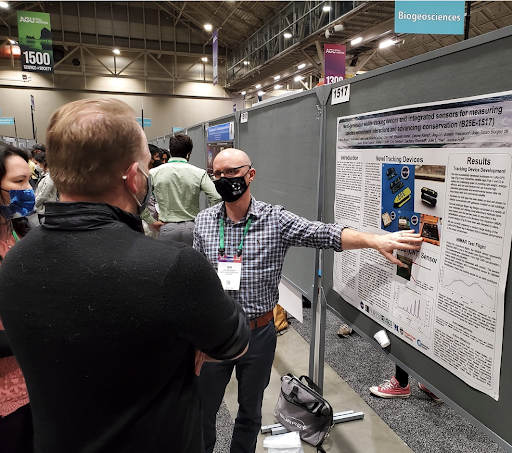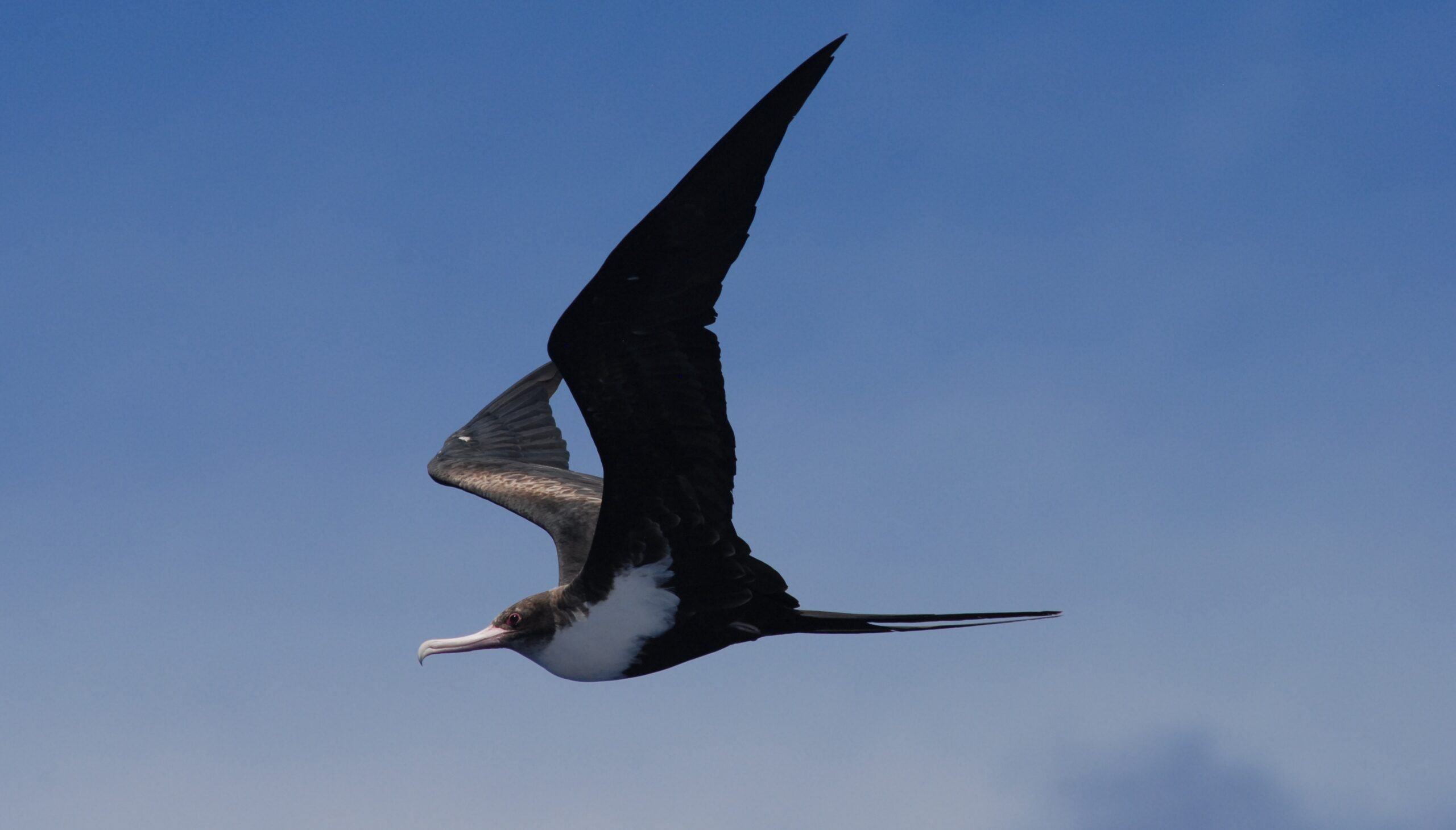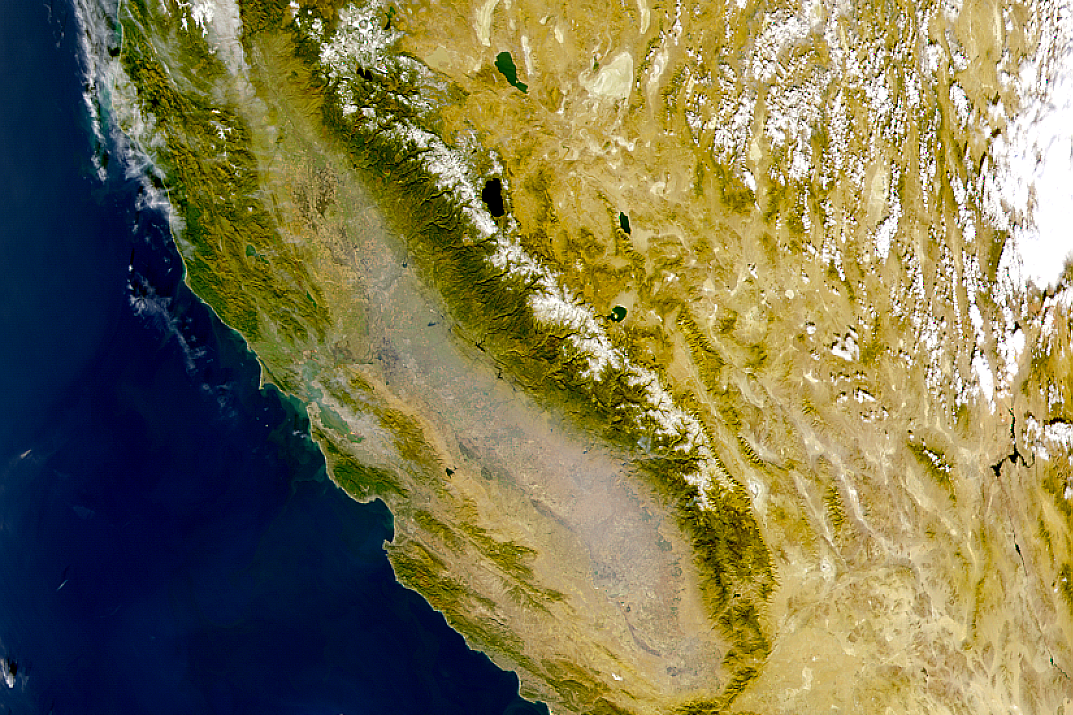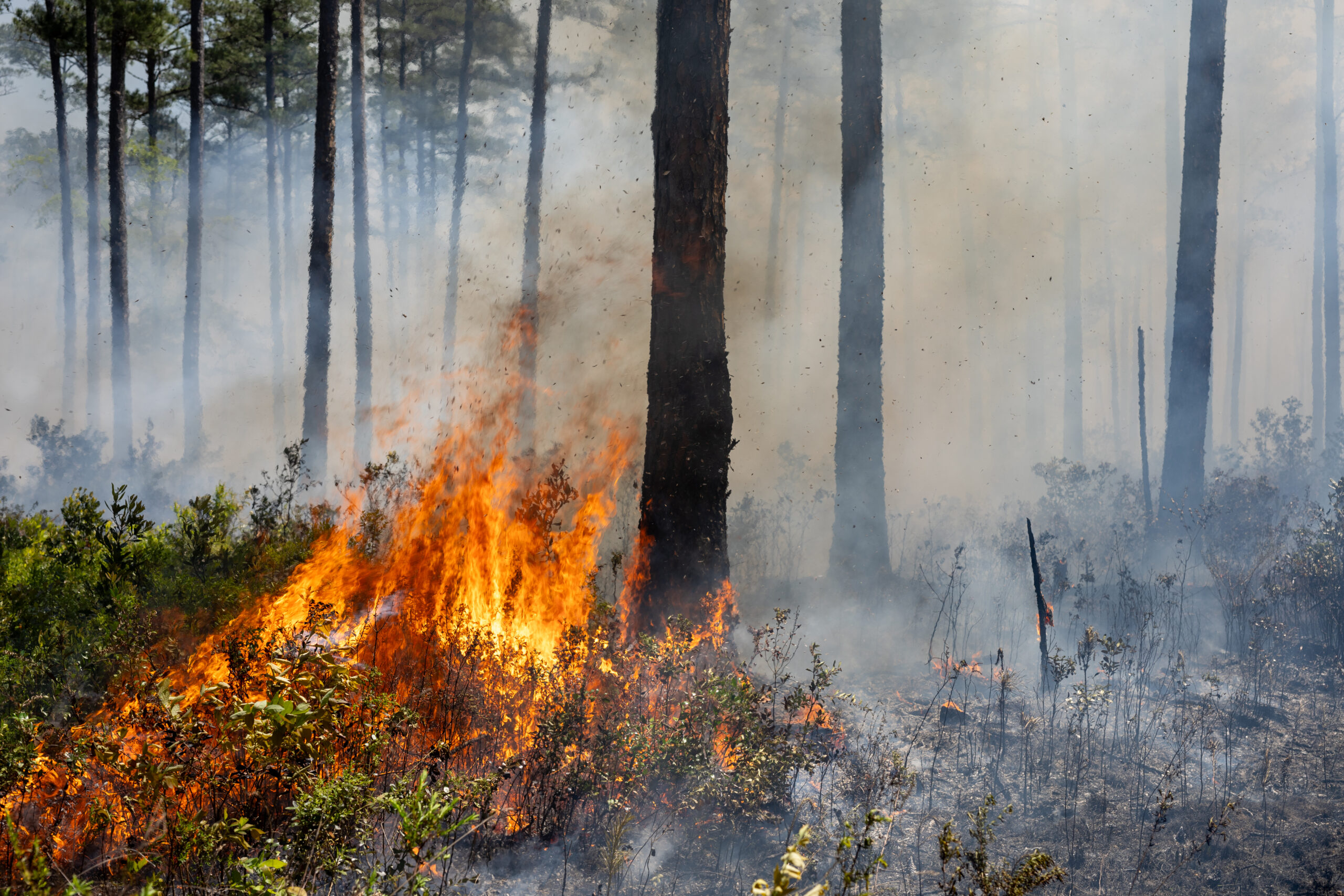By Jane Berg and Tamara Enz June 6, 2025 What is the Internet of Animals? For…
BAERI and NASA Participate at American Geophysical Union Fall Meeting
Over 25 BAERI and NASA Ames Science Directorate researchers presented in person or virtually at the American Geophysical Union (AGU) Fall Meeting in New Orleans, LA., December 13-17, 2021. AGU is the leading forum for advancing Earth and space science and leveraging this research toward solutions for societal challenges. The theme of AGU21 was “Science is Society.” More than 25,000 attendees from 100+ countries represented to the global Earth and space sciences community at AGU21.
Below is a list of BAERI and NASA Ames Science Directorate researchers who gave conference papers, poster talks, and hosted exhibit tables at AGU.
BAERI
Brenna Biggs – NASA Student Airborne Research Program
Steve Broccardo – SeaSTAR: Sunphotometer Platform Diversification for Aerosol Characterization Over the Ocean
Kate Duffy – Communicating Metrics of Land Surface Temperature Variability using Multi-Sensor Machine Learning
Hiro Hashimoto – GeoNEX-SUBSETS: Geostationary Satellite Observations over International Observing Network Sites

Sam LeBlanc Aerosol Optical Depth is More Consistent than Aerosol Size Over Large Distances During KORUS-AQ
Forrest Melton – OpenET: Operational Evapotranspiration Data for Water Management in the Western United States
Sreeja Nag – Simulating the Impact of Agile, Heterogeneous, Distributed Spacecraft with Intelligent Scheduling (D-SHIELD) to Reduce Global Soil Moisture Uncertainty
Taejin Park – #1 Improving Geolocation Accuracy of the Advanced Meteorological Imager on the GEO-KOMPSAT-2; #2 Integrating field measurement, remote sensing, and modeling approach to track forest cover and above ground biomass changes in the Northeast Asian temperate forests
Kristina Pistone – #1 Variations in Radiative Heating of Humid Biomass Burning Aerosols in the Southeast Atlantic from Airborne Observations and Reanalysis; #2 Assimilating Lessons Learned – From URGE to NASA’s Student Airborne Science Activation (SaSa) Project
Qian Tan – Poleward Dust Transport Estimated by a Combination of Lidar Measurements and MERRA-2 Wind Fields
Thomas Vandal – Physics Guided Optical Flow for Tracking Atmospheric Motion
NASA Ames Science Directorate
Ian Brosnan – Next-generation Wildlife Tracking Devices and Integrated Sensors for Measuring Species-environment Interactions and Advancing Conservation
Robert Chatfield – Transformation of Fire Emission Composition Detailed from Sources to Hundreds of Kilometers Using Enhancement Ratios Based on Multiple Tracers
Amanda Croteau – Using Landsat 8 Satellite Imagery to Analyze Biogeochemical Constituents in the Waters of the San Francisco Bay Area and Beyond
Diana Gentry – #1 Constraining Venus Cloud Habitability: Earth’s Aerobiosphere as an Analogue Environment; #2 Classifying Agnostic Biosignatures using Raman, VNIR, and Elemental Data
Levi Goldston – Carbon Monoxide Instrument for High-Altitude Science Flights
Diane Huebner – Assessing Alaskan Boreal Forest Landcover Affected by Climate-wildfire Interactions from Ground Truth Surveys and NASA Airborne Remote Sensing
Laura Iraci – Release of the AJAX In Situ Airborne Trace Gas Data Set for Satellite Validation and Atmospheric Science Studies
Lee Johnson – Initial Evaluation of Crop Manage Decision-Support Model for Vineyard ET Estimation
Matthew Johnson – Spatiotemporal Methane Emissions from Global Lakes and Reservoirs
Meloë Kacenelenbogen – Multi-sensor, Model, and Measurement Synergy to Improve our Understanding of Aerosol Distributions and Processes
Arthur Mizzi – High Resolution Assimilation of Multiple Satellite Retrievals with Emissions Adjustment to Improve Air Quality Forecasting with WRF-Chem/DART
Chris Potter – #1 Calibration of Landsat 8 Aquatic Reflectance Band Data to Spatial Variations in Chlorophyll a, Suspended Sediment, N, and P in Coastal Estuaries of Southern Louisiana; #2 Vegetation Heights for Landsat Land Cover Classes in the Interior Boreal Forest Region of Alaska
Don Sullivan – Autonomous Scientific Observations: Building Reproducible Research Today and Into the Future
Weile Wang – Development of the GeoNEX Level 2G Products: Exploiting the Diurnal Variability of TOA Reflectance in Atmospheric Correction
Daniel Whitt – How Strong is Ocean Mixing in the Pacific Ocean Cold Tongue, and Does it Matter?
Contact the authors directly if there’s a topic here that interests you. Our apologies to anyone we may have missed.



